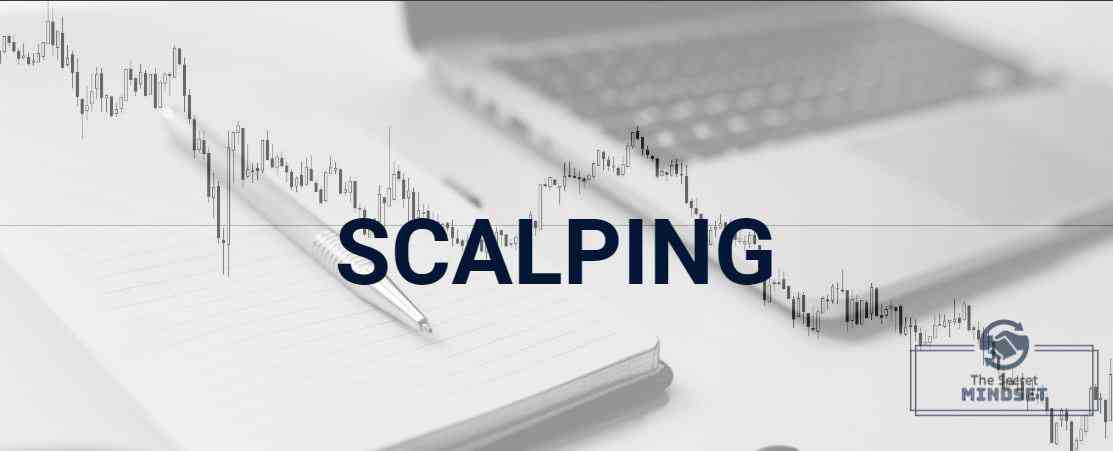Table of Contents
Growth stocks investing is a popular method used by investors to make money in the stock market. Investors have always been attracted to growth stocks because these companies increase their profits at a much faster rate than other market stocks.
What are Growth Stocks?
Growth stocks are considered the companies that are growing faster than the economy and are also growing faster than your average company on the stock market. These stocks are being valued on their potential, rather than actual intrinsic value.
Investors usually bet that these companies will grow faster than the competition, usually as a result of a great product/service or due to their capable management.
Growth stocks typically reinvest all the profits they make for increasing the business. This means that investors buy growth stocks because they anticipate the value of the stock to increase as opposed to buying the stock for receiving a dividend.
This means that a growth company could offer its investors a dividend, but the management believes it’s better for the investors in the long term to reinvest their money back into the business. This will lead to bigger growth and more profits in the long term. That translates into even bigger dividends.
Of course, the main aim is a much bigger stock price for investors, as long as they don’t sell and stay invested.
A growth investor is someone who buys high and sells even higher. That’s strange because you probably know that the number one rule in investing/trading is that you must buy low and sell high.
Well, a growth investor buys a stock that looks expensive but it doesn’t matter to him, because he believes he can sell it at an even more expensive price. Not now or next month, but a couple of years down the line.
So, when investors are analyzing the growth stocks, they look at things like profit, cash flow and, above all else, revenue. In fact, some growth companies won’t even record huge profits and won’t generate cash flow.
But that doesn’t matter. If investors see fast growth on the revenue side, they may decide to think it’s worth investing. They commit to waiting a few years down the line for the profits and the cash flow to come.
Advantages of Growth Stocks
Spectacular Long-Term Profits
When it comes to investing, we all have the same dream: to buy some stocks and to record incredible increases. We buy growth stocks because higher earnings growth forecasts would result in a higher future value of the stock.
It worked extremely well in the past, especially in the late 90s, when we saw a lot of technology stocks exploding in price. We saw several companies performing really well like Dell, Microsoft and Amazon, for example.
You can find growth stocks in the daily list of companies setting new highs for the year or inside the portfolios of well-known investors.
Normally, when you invest in growth stock you will pay a higher price. However, occasionally you’ll get really lucky and you’ll be able to spot a growth company that is set to grow really fast, with a current share price which is remarkably low. With a proper research and analysis, you can get a “double win” by buying cheap and expecting at a fantastic growth rate.
Competitive Advantage
Growth stocks are companies with a competitive advantage. Usually, a growth stock will have a great product/service. These are the companies that are first on the market to introduce a new product or service to the public.
Other growth stocks are the most popular companies on the market, companies that are dominating their competitors.
Bull Market Leaders
In the beginning phase of a bull market, growth stocks are usually the first ones to lead the market and record new price highs.
New growth stocks will usually dominate for at least two bull market cycles. Then the emphasis may change for the next cycle to cyclical stocks or newly improved sectors of the market. This could include also defense stocks that were left behind in the previous cycles.
Disadvantages of Growth Stocks
High Price
The price of growth stocks can be high despite the fact the company’s result aren’t spectacular. Growth stocks usually have high price-earnings ratios and high price-to-book ratios. They’re not cheap and don’t seem to be cheap.
When investors decide to buy growth stocks, they know they are buying something expensive. Growth stocks tend to have a higher valuation in the market, supported by investors’ demand.
Riskier than Value Investing
The fact that you’re reinvesting profits and the fact that you’re buying at a relatively expensive price in the first place means that growth investing is often riskier than value investing.
Growth stocks that are trading near their maximum levels are riskier because, in times of instability on the stock exchange, they may suffer more extensive corrections.
Wrong Label
The fact that a stock posted a good five-year growth record doesn’t necessarily imply that it must be labeled as a growth stock.
If you are an informed investor you will often find out that some companies called growth stocks are producing a substantially slower rate of growth than they did 10-15 years ago.
These should usually be avoided. Their growth record is more like a fully matured growth stock. Older and larger organizations frequently show slow growth.
Many companies are also overvalued. They are over-hyped by investors and assigned more value than they deserve.
That’s why it’s important to find “the new kid on the block”, “the next big thing” and be careful labeling wrong stocks.
Focus on Future Flows
Growth stock investors are price unconscious. This means that they assign more weight to forecasts than they do to current prices. They focus on forecasting only future flows like revenues, cash, or earnings. The current balance sheet is often ignored.
Uniformed investors make bets on market forecasts. They try to buy at bottoms and sell at tops.
They don’t make investment judgments taking into account all the important factors. They are rather making market judgments by trying to predict future prices.
No Dividends
Most of the time, growth stocks won’t pay dividends. A dividend is an annual or quarterly cash payment from the company to its investors. Instead of offering a dividend, growth stocks invest in their operations or expansion, in hopes of rewarding investors with more valuable shares of a stronger brand.
So, with growth stocks, an investor records a profit if he sells shares for more than they cost to buy.
Extreme Volatility
Growth stocks are extremely volatile. They can make huge price moves in either direction. During economic boom growth stocks can be a delight. They will lead the line of increases. But during adverse times, growth stocks tend to decrease at a higher pace than the market.
If an important figure is wrong in any of market forecasts regarding the economy, industry, company earnings, for example, market losses are huge and rapid.
How to Identify Growth Stocks
Research
Buying a stock just because you heard it on news that some expert called it the next big thing, it’s not a wise thing. Before engaging in such risking investment, you should make your own research on the best-performing companies on the market.
- Start evaluating the annual and quarterly reports in the past 5-10 years, in order to understand their performance.
- Look at the sales growth. You want to see increases compared to the previous periods. Try to focus on companies that managed to increase their sales constantly. This is the first sign that indicates a possible growth stock.
- Dig deeper and find out why the companies managed to increase their sales. Is it because they offer a product or service that is very much in demand? Or they are market leaders in their sector? Do they have a capable management?
- Analyze the dividend payments trend in the last 5-10 years. If they offered constant dividends, then they might not be a growth stock. We want to find companies that are still in an early stage of growth and retained most of its profits for expansion.
- Analyze the trend of the company’s reported earnings. Stocks are valued by investors in terms of earnings. Check if the companies earned more money as the years went by. Look for companies that posted constant increases of earnings per share (EPS) in recent years.
- Analyze the operating cash-flow of the company. Cash flow is a great indicator for evaluating the health of a company’s operations. We want to see increases in the operating cash-flow over the recent years. This tells us that the company reinvested its cash to grow its business. A negative operating cash flow would mean the company could not continue to pay its bills without borrowing money or raising additional capital.
- Analyze the trend of the financial ratios. Look at the Return on Equity (ROE), we want to see a higher number here as it measures the company’s profitability. ROE tells us if the company is using efficiently the cash it generates from the business. We want to see an upward trend on ROE.
- Check the debt of the company in recent years. Analyze the trend of the debt-to-equity ratio. We want to avoid companies with a high debt-to-equity ratio. A high debt/equity ratio usually indicates that a company has been aggressive in financing its growth with debt.
Think Long-Term
Investments in growth stocks should not be made for the short-term. You must look at the bigger picture when you put your money into these companies. So, after you analyzed the past performance of the company, you have to ask yourself several questions regarding the future evolution of the growth stock you are investing in:
- What will be the company’s market share in the future?
- What are the main competitors that could affect the growth stock’s market share?
- What will happen if the current strong management team will leave? Will this change have an important impact on the growth stock business?
- Is the company planning to expand into new countries?
Go deeper and calculate the projected profit growth of the company. There are a lot of resources online where you can find these numbers.
Look at the forward P/E of the company. The forward P/E is based on analyst expectations of what a stock is going to deliver in the next financial years.
Try to estimate the future financial health of a company. Ask yourself if the company will be able to maintain and even increase its level of profitability.
These are valid questions you should look into. Nobody can predict the future, we all know that, but we should try at least to estimate how the company will look in 5 years, or 10 years.
Market timing
When you finally decided on most attractive growth stocks, you have to time your entry on the market. The market has a directional character, meaning that it follows a trend. As we are investing in the long term, we need to find a good entry point.
- Look at the historical performance over a long period of time to see the growth stock’s performance during bull and bear markets
- Look at the corrections recorded during bear markets and compare them to other stocks.
- Find the growth stocks that hold their value the most, or stocks that recover quickly their market losses. Growth stocks declining the least during a bull market correction are your strongest and best investments. Stocks that decrease the most are your weakest choices.
For example, if the overall market suffers a 10% correction, our three best growth stocks could decrease by 15%, 20%, and 30%. The companies down only 15% or 20% are likely to be our best investments after they recover.
A growth stock plunging 40% during a general market decline of 10% could represent a warning signal that you should stay away from such an uncertain stock.
- Don’t buy growth stocks when they are at their peak of popularity and overpriced. Try to buy when they are selling at reasonable prices and hold onto them
- Look for stocks that record new highs, but buy during corrections.
Diversification
Investing in a portfolio full of growth stocks is not a smart move. You might think that adding a lot of growth stocks into your portfolio would bring you higher returns. The reality is that you need to protect your capital by adding other types of stocks.
Of course that you can pick 5 growth stocks and all of them could record significant gains. However, we must think ahead and adjust our portfolio to withstand to all market conditions.
The key to any investment portfolio is diversification. If you’re planning to invest in growth stocks you must diversify your portfolio across many different sectors.
So I wouldn’t take all of my money and invest all in tech growth stocks, for example. It’s wiser to construct a well-diversified portfolio with stocks from different industries.
Add some blue-chip stocks, the most valuable companies and, at the same time, the safest stocks you can add to your portfolio.
Throw in some defensive stocks, in order to diminish the impact the market volatility has on your portfolios.
Bring in some value stocks, those cheap undervalued companies with a great potential.
Intense concentration in growth stocks will leave you with no room for errors in your analysis. Invest in a balanced portfolio and you will be successful on the stock market.












